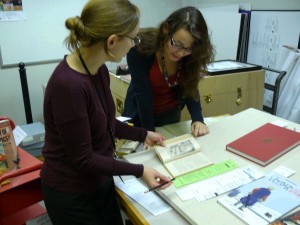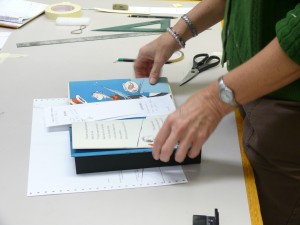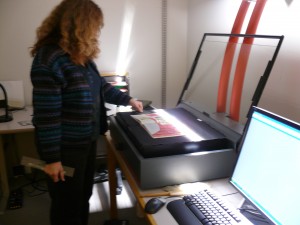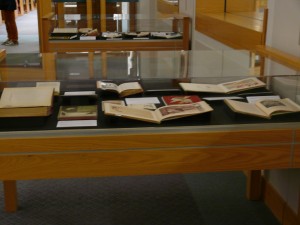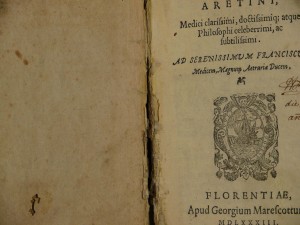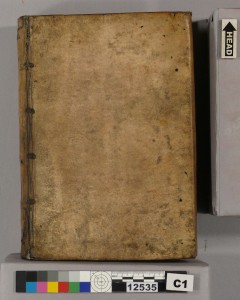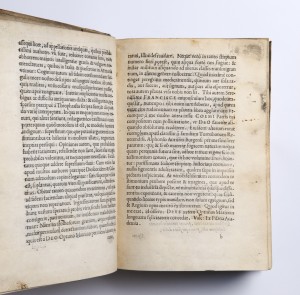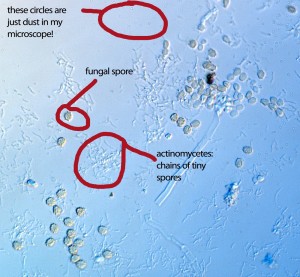by Michele Brown
A new exhibit: “Wardrobes and Rabbit Holes: a Dark History of Children’s Literature” just opened in the Hirshland Exhibition Gallery in the Kroch Library at Cornell University. Utilizing Cornell’s rich rare book and manuscript collections, the exhibit explores many themes in children’s literature.
The Division of Rare and Manuscripts Collections installs at least two major exhibits each year, and Cornell Library Conservation works closely with them to make sure the materials are displayed safely and look their best. Each exhibit takes many hours and fine coordination between several departments.
First, curators select and evaluate the materials for the exhibit. Eisha Neely (left) and Freddie Loew discuss potential candidates.
These are then examined by conservators from the conservation unit. Michele Hamill will evaluate and, if necessary treat, flat paper and photos, whereas Michele Brown will treat books and other items, including broken game boxes.
The exhibit coordinator, in this case Eisha, decides on the color theme for the exhibit. The supports for all of the materials are made from high quality board by Pat Fox, Assistant Book Conservator, who also advises the coordinator on the amounts of board needed for the supports.
Rhea Garen , from the Digital Media Group, scans each item in the display.
The finished exhibit looks great! The materials are safe and supported. You can view the exhibit online.
